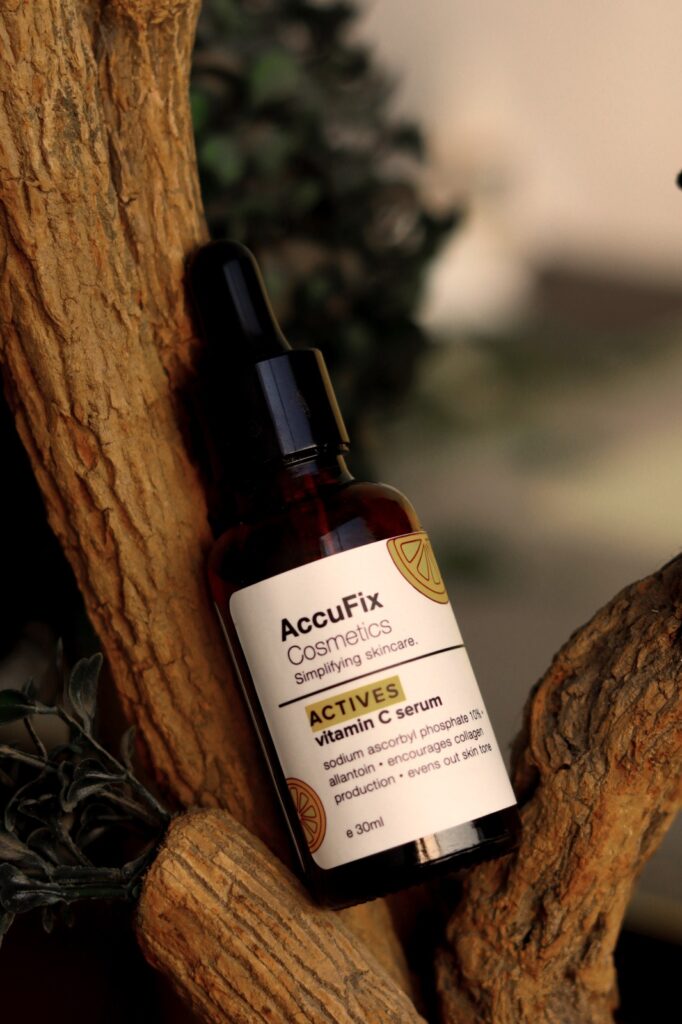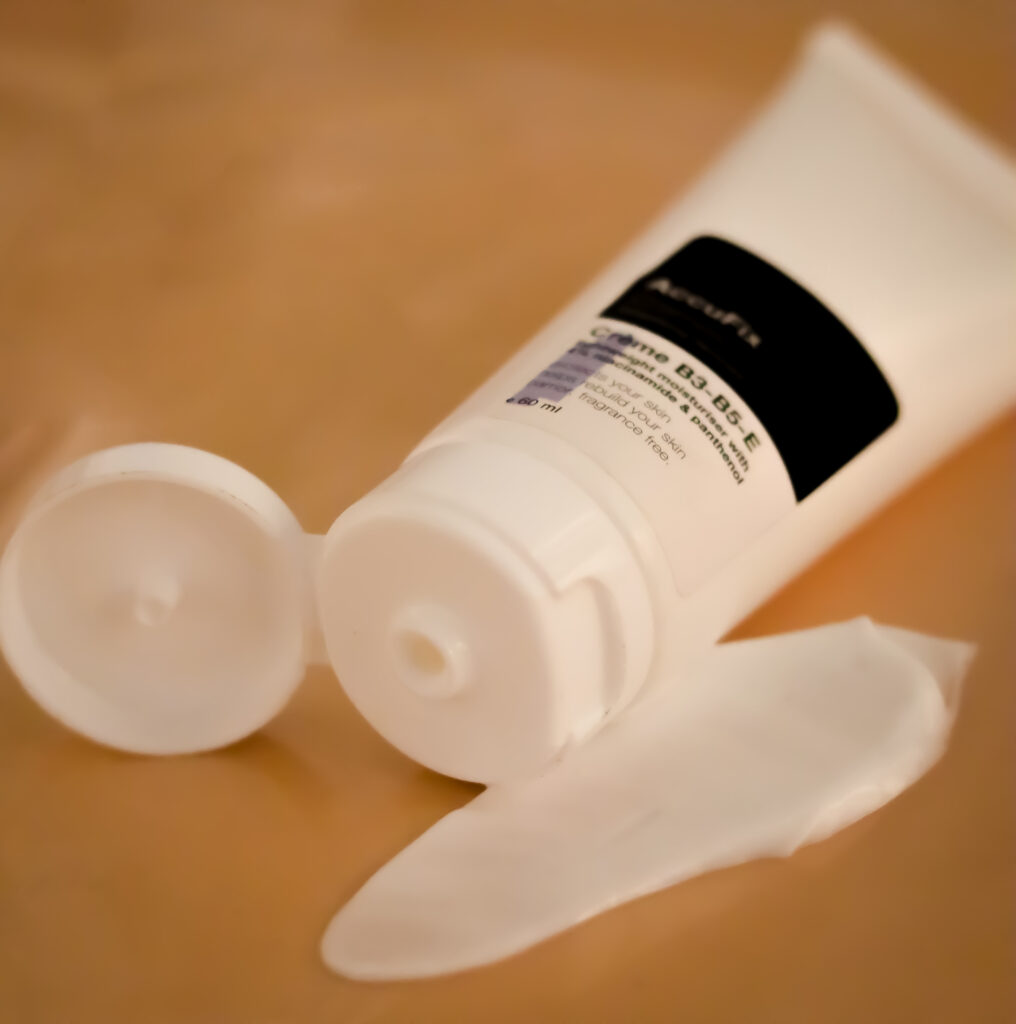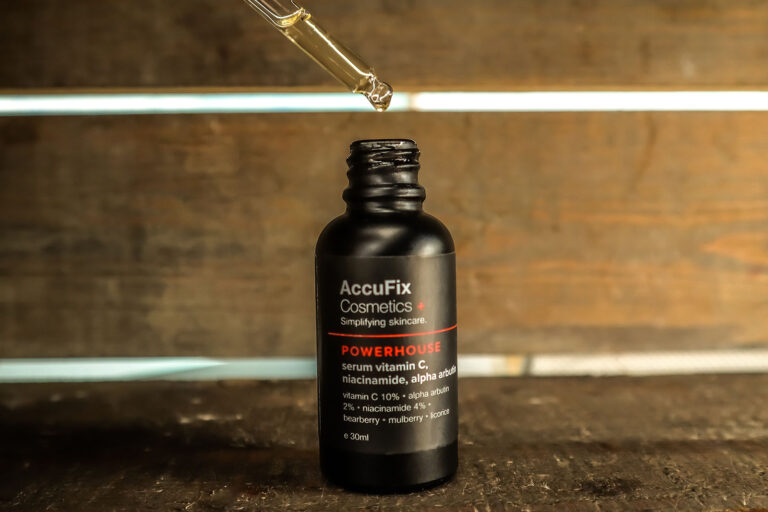In the vast world of skincare, myths and misconceptions often abound. One particular myth that has been circulating for years is the idea that you cannot mix vitamin C and niacinamide in your skincare routine. To get to the bottom of this misconception, we sat down with skincare expert and founder of AccuFix Cosmetics, Yasmeen Naseer.
Let’s dive into and explore the truth behind combining these two powerful skincare ingredients.
What are the benefits of vitamin C and niacinamide for skin?
Vitamin C and niacinamide are both renowned for their remarkable benefits when it comes to skincare. Vitamin C, also known as ascorbic acid, is a potent antioxidant that helps protect the skin from free radical damage caused by environmental stressors like UV radiation and pollution. It also aids in collagen synthesis. This makes it a great ingredient for skin elasticity and suppleness.
Niacinamide, on the other hand, is a form of vitamin B3. It’s one of the most well-researched ingredients in skincare and offers many benefits including improving skin texture, reducing the appearance of pores, and regulating sebum production. It is also known for its anti-inflammatory properties, and encourages the synthesis of ceramides in the skin, also making it great for acne-prone and sensitive skin.

Where did the myth that vitamin C and niacinamide can’t be used together originate?
The myth that vitamin C and niacinamide cannot be used together has unfortunately been perpetuated by popular skincare blogs and even some dermatologists. It is, however, perfectly safe to combine these two star ingredients.
The myth arises from the fact that when niacinamide is combined with low-pH ascorbic acid, it can convert to nicotinic acid or niacin, which may cause the skin to flush. This flushing effect however, is temporary and not harmful – even if it isn’t particularly desirable – and it’s avoided altogether with vitamin C derivatives like sodium ascorbyl phosphate, which is what we’ve used in our Vitamin C Serum and our Serum Vitamin C, Niacinamide, Alpha Arubtin. These derivatives also have the added benefit of being significantly more stable, and better suited to sensitive skin, than pure ascorbic acid.
Studies that have investigated the compatibility of vitamin C and niacinamide and have found no evidence to support the claim that they cancel each other out or cause harm. In fact, research has shown that when used together, these ingredients can complement each other and can enhance each other’s individual benefits. Together, they form a powerful combo that addresses uneven skin tone, wrinkles, loss of firmness, and dullness. Regardless of your skin type, you’ll experience a smoother, more even, and noticeably younger-looking complexion by incorporating these ingredients into your skincare routine.
Does AccuFix have any products that contain vitamin C and niacinamide?
AccuFix offers three options formulated with vitamin C and/or niacinamide to cater to different skincare needs.
The first option is our straightforward Vitamin C Serum, which contains 10% SAP (sodium ascorbyl phosphate).
Next, we have our Serum Vitamin C, Niacinamide, Alpha Arbutin. This formulation stands out as it incorporates not just one, but five active ingredients. As the name suggests, it incorporates vitamin C, niacinamide, and alpha arbutin; in addition to these star ingredients however, it also incorporates bearberry and mulberry extracts. This blend is specifically designed to combat pigmentation and promote a brighter complexion. Pigmentation is a complex process that responds better to a cocktail of active ingredients that work at different points along the pigment pathway as opposed to just one, making this a highly effective solution for those seeking to even out their skin tone.
Lastly, we have our Crème B3-B5-E. This reflects our belief in minimalist skincare, rather than an exhaustive 10-step skincare regimen. Instead of formulating a niacinamide serum, as a lot of brands have done, we’ve instead created a moisturiser that contains niacinamide at a 4% concentration. This figure was not selected arbitrarily. Studies have shown that niacinamide is effective at concentrations above 2%, but there is no clinically-tested precedent for concentrations as high as the commonly-used 10%. In fact, high concentrations can often lead to skin irritation for many people. At a concentration of 4% people can experience the benefits of niacinamide while minimising the risk of any skin irritation.
Crème B3-B5-E is suitable for all skin types and seamlessly integrates into any skincare routine.

How do you recommend that our readers incorporate vitamin C and niacinamide into their skincare routine?
So, how can you incorporate vitamin C and niacinamide into a skincare routine? Yasmeen suggests a simple and effective approach. While the ideal skincare routine will vary from person to person, she’s recommended the following general routine as a starting point that is suitable for most skin types.
In the morning, use a gentle, pH -balanced cleanser to cleanse the skin, followed by Vitamin C Serum to provide antioxidant protection and brighten the skin. Moisturise with Crème B3-B5-E. Finish up with a broad spectrum sunscreen, SPF 30 or higher.
Follow the same routine at night, but skip the sunscreen, and don’t forget to exfoliate at least 1-2 times a week. You can exfoliate more frequently if your skin is able to tolerate it.
By following this routine, you can harness the benefits of both vitamin C and niacinamide without any concerns of adverse reactions. These ingredients are not only compatible but also work synergistically to promote healthy, radiant skin.

Comments are closed.